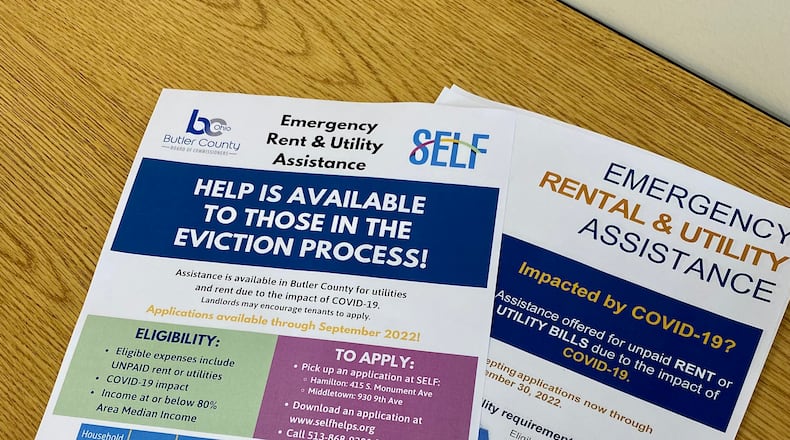The Butler County commissioners partnered with Supports to Encourage Low-income Families to manage the program. Executive Director Jeffrey Diver told the Journal-News they have awarded nearly $19.6 million to needy households and have $1.5 million left — SELF receives 10% of the money to manage the program.
SELF also received $9 million from five other state grants and has awarded basically all of it assisting 2,709 families, only $79,091 remains unspent.
Diver said they had to pause the program to catch up with a backlog but reopened Nov. 6, and they already have 100 applications.
“The need is still present,” Diver said. “We still have people claiming COVID issues and we’re still here to help them.”
According to the directive from the treasury, eligible expenses include rent, rental arrears, utilities and home energy costs, utilities and home energy costs arrears, and other expenses related to housing. Funds could also be used for “housing stability services, including case management and other services intended to keep households stably housed.”
Diver said they have had some instances of attempted fraud, but they have remained vigilant trying to make sure the need truly can be tied to the effects of the pandemic.
“The federal government at one point during this whole funding rollout had encouraged us to accept only the client’s word, they called it self attestation,” Diver said. “We chose instead to accept paperwork to prove income and other situations.”
Butler County Job and Family Services Executive Director Julie Gilbert said her agency is still seeing people who are hurting from the pandemic, especially since the extra pandemic public assistance benefits for food stamps and Medicaid have evaporated.
The food stamp supplemental payments began in March 2020 and through December this year — the extra stipend ended in February — Butler County residents were paid a total of $309.7 million in food stamp benefits and $121 million of that amount was from the COVID benefit. Overall, Butler County spending on food stamps in 2019 was $49.8 million, it jumped to $81.1 million in 2020 and $129.9 million last year.
“We are still dealing with the aftermath of the ending of the public health emergency and the return to normalcy in the applications we’re receiving and Medicaid redeterminations that we are in the middle of doing,” Gilbert said. “It is having an impact on those who had previously been receiving benefits who are no longer eligible.”
In response to the coronavirus pandemic, federal lawmakers approved two emergency rent and utility assistance programs, the first bucket of up to $25 billion was established under the Consolidated Appropriations Act of 2021, which was enacted in December 2020. The county qualified for $11.4 million and received it in one lump sum.
Another $21.5 billion was approved under the American Rescue Plan Act which was enacted in March 2021. The county commissioners were allotted $9 million but did not accept the second round of funding initially because they wanted to gauge the need first. They tapped it in January 2022 but the money has come in waves.
Not all the money was spent so the Treasury has rereleased funding periodically. The county received an additional $2 million in April. Diver said if applications keep flooding in they may need to pause the program again before the money is all spent.
About the Author

